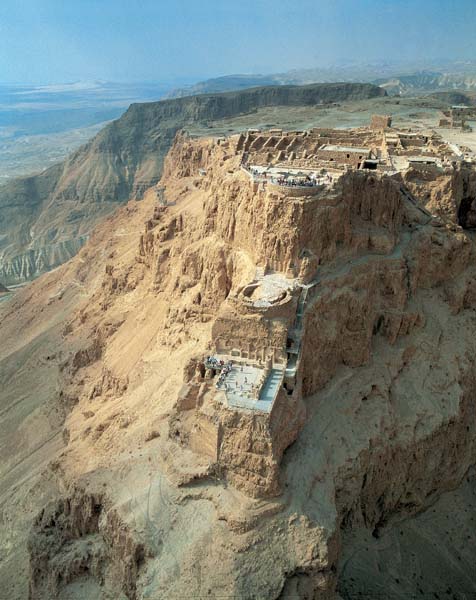
Masada fell to the Romans in 73 or 74 C.E. when the last of the Jewish rebels encamped inside the palace/fortress built by Herod the Great decided to kill themselves rather than be taken alive by Roman forces. Now, however, scientists are warning that Masada could fall again, literally.
“Masada has been degrading for 2,000 years,” says Ben-Gurion University engineering professor Yossi Hatzor. “There have been failures and erosions since Herod built it.” The mountain, which rises steeply from the valley floor to a height of at least 1,200 feet, is composed of fractured layers of limestone and dolomite, and it sits on the western edge of the Dead Sea Rift system, a seismically active area that is part of the larger Great Rift Valley. Earthquakes, temperature fluctuations and heavy rains have already caused the deterioration and collapse of some of the rock face and man-made structures of Masada.
Hatzor is a member of a team of professors from Ben-Gurion University and the University of California at Berkeley who have come together in recent years to analyze and preserve the stability of Masada, one of Israel’s most important national monuments. The team began work in 1998 when construction of a cable car system was started to transport visitors up and down the mountain. One enormous block that loomed treacherously over a tourist walkway was secured by Hatzor and his team with 30 long iron cables driven into the solid rock, making it safe for visitors to walk below. Hatzor also studied the stability of Herod’s palace and has recommended that the north face of the site be reinforced to protect it from collapse in the event of an earthquake.
Already a library member? Log in here.
Institution user? Log in with your IP address.

